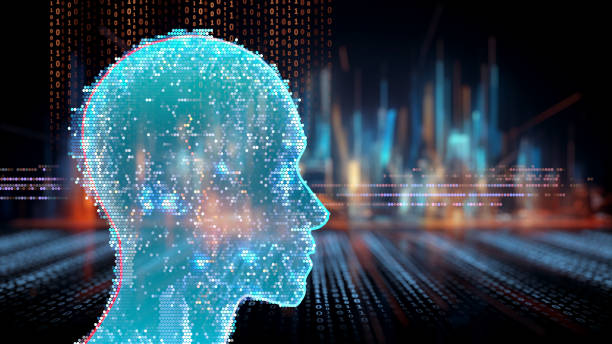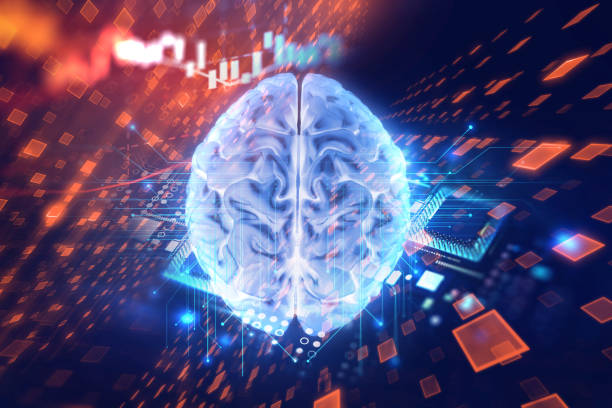What is an AI Robot and How Does It Work?

What is an AI Robot and How Does It Work?
#Artificial_Intelligence (AI), in short, refers to the ability of a machine or computer system to perform tasks that typically require human intelligence.
These tasks include learning, problem-solving, decision-making, natural language understanding, and pattern recognition.
An AI robot is a combination of robotics and artificial intelligence, meaning a physical or virtual robot capable of performing more complex and independent tasks than a regular robot using AI algorithms.
The operation of an AI robot depends on its type and application, but generally, these robots function by receiving data (via sensors or other inputs), processing this data using AI algorithms (such as machine learning, neural networks, etc.), and then performing an appropriate action (such as moving, speaking, writing, etc.).
#Machine_learning algorithms allow the AI robot to improve its performance over time with more data.
For example, an AI robot used for sorting packages in a warehouse uses vision sensors to detect the size and shape of packages, then uses machine learning algorithms to determine the best location for each package, and finally moves its robotic arms to pick up and place the packages.
This process is continuously repeated, and the AI robot learns over time to sort packages faster and more efficiently.
In fact, an AI robot has the ability to reason and make decisions based on available data and can exhibit appropriate reactions in different situations.
This feature distinguishes them from traditional programmed robots that can only execute pre-defined instructions.
Is your online sales not as expected? With Rasavab, permanently solve the problem of low sales and poor user experience!
✅ Increase visitor-to-customer conversion rate
✅ Create an enjoyable user experience and boost customer trust
⚡ Act now to receive a free consultation!
Types of AI Robots and Their Applications
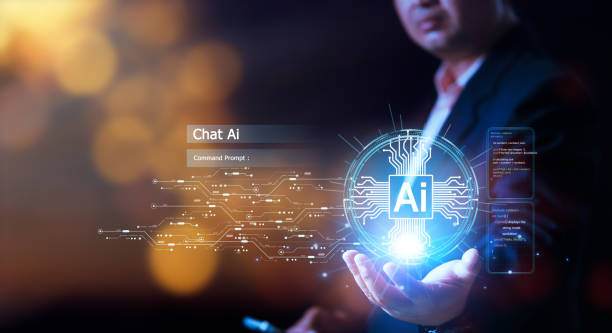
Types of AI Robots and Their Applications
AI robots are designed and built in various types, each with its specific applications.
The classification of these robots can be based on physical type, application type, intelligence level, and so on.
Some of the most common types of AI robots include:
- Industrial Robots These robots are used in factory production lines for tasks such as welding, painting, assembling parts, and so on.
They are usually very precise and fast and can work continuously without fatigue. - Service Robots These robots are designed to provide services to humans.
Examples of service robots include cleaning robots, nursing robots, waiter robots, and guide robots. - Medical Robots These robots are used in hospitals and treatment centers for performing surgeries, assisting in patient rehabilitation, and providing pharmaceutical services.
- Military Robots These robots are used in battlefields for tasks such as reconnaissance, bomb disposal, equipment transportation, and so on.
- Space Robots These robots are used for exploring other planets, repairing satellites, and conducting scientific research in space.
- Personal Robots These robots are designed for use in homes and personal environments.
Examples of personal robots include toy robots, pet robots, and robots assisting people with disabilities.
The applications of AI robots are very broad and diverse, and are increasing day by day.
These robots can help improve efficiency, reduce costs, and increase quality in various industries, including manufacturing, transportation, medicine, agriculture, and financial services.
Machine Learning and Its Role in the Development of AI Robots
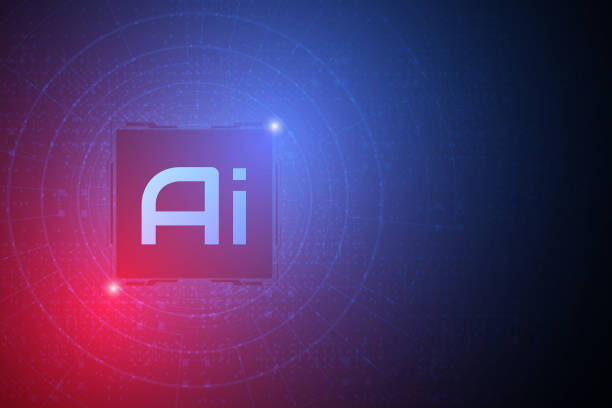
Machine Learning and Its Role in the Development of AI Robots
Machine Learning (ML) is an important subfield of artificial intelligence that allows an AI robot to learn from data and improve its performance without being explicitly programmed.
Machine learning algorithms identify patterns and relationships within data and use these patterns for prediction, decision-making, and performing various tasks.
Machine learning plays a very important role in the development of AI robots.
Without machine learning, an AI robot would not be able to perform complex tasks and adapt to dynamic environments.
For example, an AI robot designed for autonomous driving must be able to identify traffic patterns, recognize road signs, and navigate obstacles using machine learning.
There are various types of machine learning algorithms, each suitable for specific applications.
Some of the most common types of machine learning algorithms include:
- Supervised Learning In this type of learning, the AI robot is trained using labeled data.
Labeled data includes expected inputs and outputs.
The AI robot learns how to map inputs to correct outputs by analyzing this data. - Unsupervised Learning In this type of learning, the AI robot is trained using unlabeled data.
The AI robot tries to identify hidden patterns and structures by analyzing this data. - Reinforcement Learning In this type of learning, the AI robot learns by interacting with its environment.
By performing various actions and receiving rewards or penalties, the AI robot learns how to adopt the best strategy to achieve its goal.
| Type of Machine Learning | Description | Application in AI Robots |
|---|---|---|
| Supervised Learning | Using labeled data for training | Object detection, face recognition, prediction |
| Unsupervised Learning | Identifying hidden patterns and structures in data | Clustering, dimensionality reduction |
| Reinforcement Learning | Learning through interaction with the environment and receiving rewards/penalties | Navigation, robot control |
Sensors and Their Role in Information Collection by AI Robots
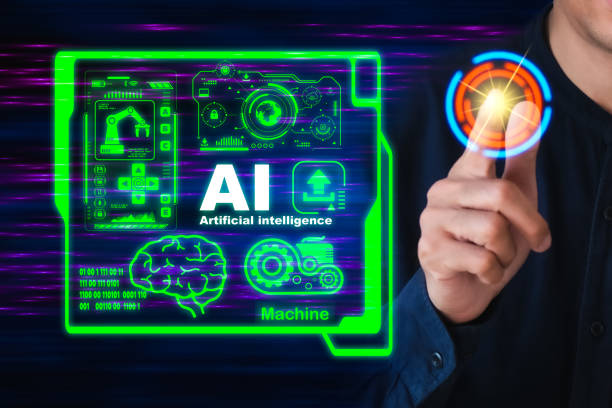
Sensors and Their Role in Information Collection by AI Robots
Sensors are tools that collect information about the surrounding environment and convert it into electrical signals.
These signals are then processed by the AI robot and used to perform various tasks.
Sensors play a very important role in the performance of AI robots, because without sensors, the AI robot would not be able to perceive its surroundings and interact with them.
There are various types of sensors, each designed to collect specific information.
Some of the most common types of sensors include:
- Vision Sensors These sensors use cameras and image processing algorithms for object detection, face recognition, navigation, and so on.
- Audio Sensors These sensors use microphones and sound processing algorithms for sound detection, speech recognition, and so on.
- Tactile Sensors These sensors are used for detecting touch, pressure, and temperature.
- Position Sensors These sensors are used to determine the spatial position of the AI robot.
- Proximity Sensors These sensors are used to detect the presence of objects near the AI robot.
The choice of the appropriate sensor type for an AI robot depends on the type of task the AI robot needs to perform.
For example, an AI robot designed for autonomous driving requires vision sensors, position sensors, and proximity sensors.
Whereas an AI robot designed to assist people with disabilities might require tactile sensors, audio sensors, and position sensors.
Does your current website convert visitors into customers, or does it drive them away? Solve this problem forever with professional corporate website design by Rasavab!
✅ Build strong credibility and branding
✅ Attract target customers and increase sales
⚡ Get a free consultation now!
Challenges and Limitations in the Development of AI Robots

Challenges and Limitations in the Development of AI Robots
The development of AI robots faces numerous challenges and limitations.
Some of the most important of these challenges and limitations include:
- High Cost Designing, building, and maintaining AI robots is very expensive.
- Complexity Developing AI algorithms and integrating them with robotic hardware is very complex.
- Need for Large Amounts of Data Machine learning algorithms require a large volume of data for training.
- Ethical Issues The use of AI robots in some fields, such as military and medicine, raises significant ethical concerns.
- Security AI robots can be vulnerable to cyberattacks.
- Technical Limitations There are still many technical limitations in the development of AI robots.
For example, AI robots still cannot perform as well as humans in complex and unpredictable environments.
Despite these challenges and limitations, the development of AI robots continues to advance rapidly.
With technological progress and cost reduction, AI robots are expected to play a more significant role in human lives in the near future.
Companies, with the help of app development, have come very close to utilizing these robots.
The Future of AI Robots and Their Impact on Human Life
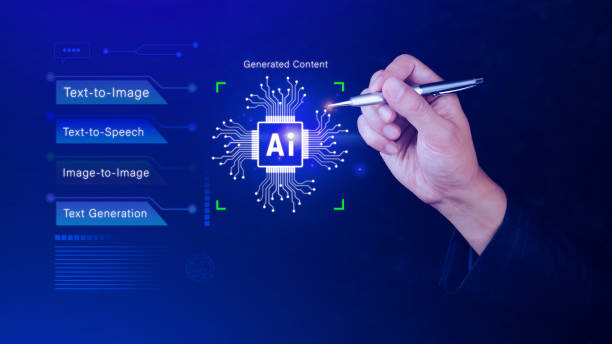
The Future of AI Robots and Their Impact on Human Life
AI robots have the potential to bring about significant changes in human lives in the near future.
It is expected that these robots will play a more important role in various fields such as manufacturing, transportation, medicine, education, customer services, and more.
Some predictions regarding the future of AI robots include:
- Increased Automation AI robots can automate many repetitive and tedious tasks, allowing humans to focus on more creative and complex tasks.
- Improved Efficiency AI robots can work with greater accuracy and speed than humans, helping to improve efficiency and reduce costs.
- Better Service Provision AI robots can provide better services to customers and help improve the customer experience.
- Creation of New Jobs The development and maintenance of AI robots can create new jobs.
- Improved Quality of Life AI robots can help improve the quality of human life, for example, by providing better healthcare services and assisting people with disabilities.
Of course, it should be noted that the development of AI robots also comes with challenges and risks.
For example, AI robots might lead to job displacement, or their misuse could result in serious harm.
Therefore, it is necessary for the development of AI robots to be carried out with care and responsibility, and ethical and security issues related to them must be considered.
AI Robots in the Manufacturing Industry
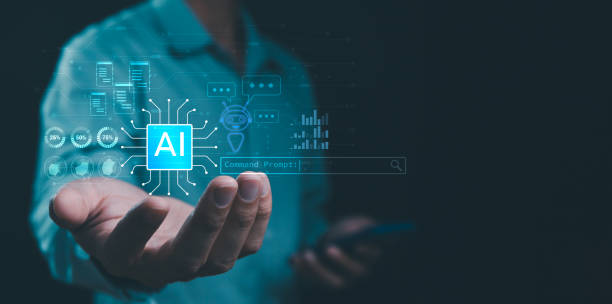
AI Robots in the Manufacturing Industry
The manufacturing industry was one of the first industries to benefit from AI robots.
AI robots in the manufacturing industry can perform various tasks, including:
- Welding
- Painting
- Parts Assembly
- Quality Inspection
- Packaging
- Material Handling
The use of AI robots in the manufacturing industry can have several advantages, including:
- Increased Productivity AI robots can work continuously without fatigue, helping to increase productivity.
- Cost Reduction AI robots can help reduce costs by lowering labor expenses and minimizing waste.
- Improved Quality AI robots can work with greater precision and speed than humans, contributing to improved product quality.
- Enhanced Safety AI robots can operate in hazardous environments, helping to increase employee safety.
With technological advancements, AI robots are expected to play a more significant role in the manufacturing industry and contribute to the creation of smart factories.
Smart factories are facilities where AI robots, the Internet of Things (IoT), big data, and other innovative technologies are used for process automation, efficiency improvement, and cost reduction.
The Role of AI Robots in Medicine and Healthcare
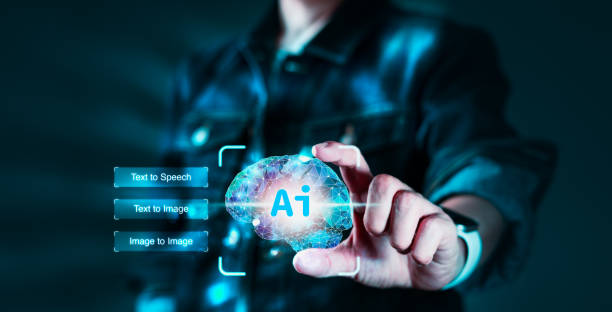
The Role of AI Robots in Medicine and Healthcare
AI robots are revolutionizing the medical and healthcare industry.
These robots can be used in various fields such as disease diagnosis, performing surgeries, patient rehabilitation, and providing pharmaceutical services.
Some applications of AI robots in medicine and healthcare include:
- Disease Diagnosis AI robots can assist in disease diagnosis by analyzing medical images, such as X-rays and MRI scans.
- Performing Surgeries AI robots can assist surgeons in performing complex and delicate surgical procedures.
- Patient Rehabilitation AI robots can help patients regain their abilities after injury or illness.
- Providing Pharmaceutical Services AI robots can help patients take their medications correctly and manage side effects.
The use of AI robots in medicine and healthcare can offer numerous benefits, including:
- Increased Accuracy AI robots can work with greater precision than humans, helping to reduce errors.
- Cost Reduction AI robots can help reduce costs by lowering labor expenses and decreasing patient hospitalization times.
- Improved Quality of Care AI robots can help provide better and faster healthcare.
| Application Area | Example | Benefits |
|---|---|---|
| Disease Diagnosis | Analyzing medical images for cancer detection | Increased accuracy, early detection |
| Surgery | Robot-assisted surgery for greater precision | Reduced risk of bleeding, improved surgical outcomes |
| Rehabilitation | Rehabilitation robots to assist patient movement | Improved speed and quality of rehabilitation |
Does your company website perform as befits your brand? In today’s competitive world, your website is your most important online tool. Rasavab, specialists in professional corporate website design, helps you to:
✅ Build credibility and customer trust
✅ Convert website visitors into customers
⚡ Get a free consultation now!
AI Robots and the Transformation of the Customer Service Industry

AI Robots and the Transformation of the Customer Service Industry
AI robots are changing the way customer services are provided.
These robots can answer customer questions, solve their problems, and provide them with the necessary information 24 hours a day, 7 days a week.
Some applications of AI robots in the customer service industry include:
- Chatbots Chatbots are computer programs that can interact with customers online and answer their questions.
- Voice Assistants Voice assistants can help customers interact with companies through voice.
- Service Robots Service robots can assist customers in stores and shopping centers.
The use of AI robots in the customer service industry can have numerous advantages, including:
- Cost Reduction AI robots can help reduce costs by decreasing the need for human labor.
- Improved Response Speed AI robots can quickly answer customer questions and resolve their issues.
- 24/7 Service Provision AI robots can provide services to customers 24 hours a day, 7 days a week.
- Enhanced Customer Experience AI robots can help improve the customer experience by providing fast, accurate, and personalized services.
Ethical and Social Issues Related to AI Robots

Ethical and Social Issues Related to AI Robots
The development and use of AI robots raise significant ethical and social issues.
Some of these issues include:
- Job Displacement AI robots can lead to job losses as they can automate many tasks.
- Inequality AI robots may exacerbate economic and social inequality, as only individuals and companies with access to the technology can benefit from them.
- Privacy AI robots can collect large volumes of personal information, and this data may be misused.
- Responsibility If an AI robot causes harm to someone, who is responsible for this harm?
- Bias AI algorithms may inadvertently be biased, acting in favor of some groups and to the detriment of others.
To address these ethical and social issues, policymakers, industry leaders, and researchers must collaborate to develop laws and regulations that ensure the responsible and ethical use of AI robots.
Furthermore, it is essential to provide necessary training to individuals so they can adapt to new technologies and benefit from them.
Remember, the importance of software development in today’s world is undeniable, and this field must be approached with caution and care.
Frequently Asked Questions
| Question | Answer |
|---|---|
| What is an AI robot? | An AI robot is a machine capable of understanding its environment, reasoning, learning, and making decisions to perform tasks autonomously. |
| What is the difference between ordinary robots and AI robots? | Ordinary robots perform repetitive tasks based on prior programming, whereas AI robots can learn from experience, interact dynamically with their environment, and even behave in ways that resemble human intelligence. |
| What are the main applications of AI robots? | They are used in industries (manufacturing, assembly), medicine (surgery, diagnosis), services (customer support, domestic), exploration (space, underwater), and many other fields. |
| What technologies are used in building AI robots? | Machine Learning, Computer Vision, Natural Language Processing, Deep Learning, and Robotics are among the key technologies. |
| Can AI robots have emotions? | Currently, robots do not have emotions in the human sense. They can identify and react to emotions, but they do not experience emotions themselves. |
| What are the main challenges in the development of AI robots? | Safety, reliability, ethics, autonomy, adaptability to complex environments, and natural human interaction are among the important challenges. |
| How are AI robots trained? | They are typically trained using large volumes of data, machine learning algorithms, and deep learning to identify patterns and make decisions. |
| Examples of AI robots in daily life? | Smart robotic vacuum cleaners, customer support chatbots, self-driving cars, and surgical robots in hospitals. |
| Are AI robots a threat to human jobs? | Some repetitive jobs may become automated, but at the same time, robots can increase productivity and create new jobs in the development, maintenance, and supervision of these systems. |
| How is the future of AI robots predicted? | They are expected to become smarter, more autonomous, and capable of performing more complex tasks, engaging in closer interaction with humans in various environments. |
And other advertising services from Rasa Web advertising agency:
- Smart Reportage: A professional solution for user engagement, focusing on attractive UI design.
- Smart Marketplace: An effective tool to increase sales by utilizing real data.
- Smart Link Building: An effective tool for campaign management with SEO-driven content strategy.
- Smart SEO: A fast and efficient solution for digital branding, focusing on custom programming.
- Smart Sales Automation: A professional solution for digital branding, focusing on intelligent data analysis.
And over hundreds of other services in the field of internet advertising, advertising consultation, and organizational solutions.
Internet Advertising | Advertising Strategy | Advertorials
References
Complete Guide to Analytical AI Robots
Applications of Analytical AI in Business
The Role of Artificial Intelligence in Today’s World
Artificial Intelligence and the Future of Data Analysis
? Ready to revolutionize your business in the digital world? Rasaweb Afarin Digital Marketing Agency, by offering comprehensive and innovative solutions, is with you on the path to success. For sustainable growth, from **website design with a modern user interface** to SEO strategies and targeted advertising campaigns, contact us.
📍 Tehran, Mirdamad Street, next to Central Bank, Kazeroon Jonubi Alley, Ramin Alley, No. 6

